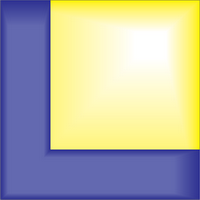vector¶
Routines for working with vectors These routines can be used with vectors, as well as with matrices containing a vector in each row.
Functions¶
vector.angle()... Angle between two vectorsvector.GramSchmidt()... Gram-Schmidt orthogonalization of three pointsvector.normalize()... Normalization of a vectorvector.project()... Projection of one vector onto anothervector.plane_orientation()... Orientation of plane defined by three pointsvector.qrotate()... Quaternion indicating the shortest rotation from one vector into another.vector.rotate_vector()... Rotation of a vector
Details¶
Routines for working with vectors These routines can be used with vectors, as well as with matrices containing a vector in each row.
-
vector.GramSchmidt(p1, p2, p3)[source]¶ Gram-Schmidt orthogonalization
Parameters: p1 : array (3,) or (M,3)
coordinates of Point 1
p2 : array (3,) or (M,3)
coordinates of Point 2
p3 : array (3,) or (M,3)
coordinates of Point 3
Returns: Rmat : array (9,) or (M,9)
flattened rotation matrix
Notes
The flattened rotation matrix corresponds to
\[\mathbf{R} = [ \vec{e}_1 \, \vec{e}_2 \, \vec{e}_3 ]\]
-
vector.angle(v1, v2)[source]¶ Angle between two vectors
Parameters: v1 : array (N,) or (M,N)
vector 1
v2 : array (N,) or (M,N)
vector 2
Returns: angle : double or array(M,)
angle between v1 and v2
Notes
\[\alpha =arccos(\frac{\vec{v_1} \cdot \vec{v_2}}{| \vec{v_1} | \cdot | \vec{v_2}|})\]
-
vector.plane_orientation(p1, p2, p3)[source]¶ The vector perpendicular to the plane defined by three points.
Parameters: p1 : array (3,) or (M,3)
coordinates of Point 1
p2 : array (3,) or (M,3)
coordinates of Point 2
p3 : array (3,) or (M,3)
coordinates of Point 3
Returns: n : array (3,) or (M,3)
vector perpendicular to the plane
Notes
\[\vec{n} = \frac{ \vec{a} \times \vec{b}} {| \vec{a} \times \vec{b}|}\]
-
vector.project(v1, v2)[source]¶ Project one vector onto another
Parameters: v1 : array (N,) or (M,N)
projected vector
v2 : array (N,) or (M,N)
target vector
Returns: v_projected : array (N,) or (M,N)
projection of v1 onto v2
Notes
\[\vec{n} = \frac{ \vec{a} }{| \vec{a} |}\]\[\vec{v}_{proj} = \vec{n} (\vec{v} \cdot \vec{n})\]
-
vector.qrotate(v1, v2)[source]¶ Quaternion indicating the shortest rotation from one vector into another. You can read “qrotate” as either “quaternion rotate” or as “quick rotate”.
Parameters: v1 : ndarray (3,)
first vector
v2 : ndarray (3,)
second vector
Returns: q : ndarray (3,)
quaternion rotating v1 into v2
-
vector.rotate_vector(vector, q)[source]¶ Rotates a vector, according to the given quaternions. Note that a single vector can be rotated into many orientations; or a row of vectors can all be rotated by a single quaternion.
Parameters: vector : array, shape (3,) or (N,3)
vector(s) to be rotated.
q : array_like, shape ([3,4],) or (N,[3,4])
quaternions or quaternion vectors.
Returns: rotated : array, shape (3,) or (N,3)
rotated vector(s)
Notes
\[q \circ \left( {\vec x \cdot \vec I} \right) \circ {q^{ - 1}} = \left( {{\bf{R}} \cdot \vec x} \right) \cdot \vec I\]More info under http://en.wikipedia.org/wiki/Quaternion
Examples
>>> mymat = eye(3) >>> myVector = r_[1,0,0] >>> quats = array([[0,0, sin(0.1)],[0, sin(0.2), 0]]) >>> quat.rotate_vector(myVector, quats) array([[ 0.98006658, 0.19866933, 0. ], [ 0.92106099, 0. , -0.38941834]])
>>> quat.rotate_vector(mymat, [0, 0, sin(0.1)]) array([[ 0.98006658, 0.19866933, 0. ], [-0.19866933, 0.98006658, 0. ], [ 0. , 0. , 1. ]])
